From a simple cleaning tool to a home decor item, old whisk brooms sure have come a long way! Come see a bit about their past here below! If you don’t already, I promise you will love these old brooms.
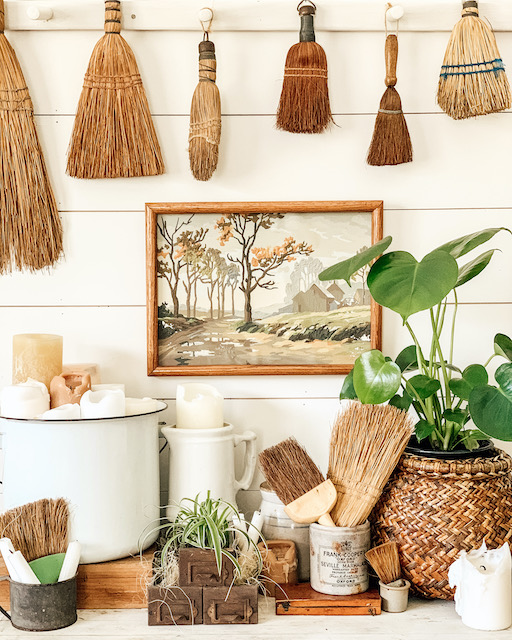
I recently was digging around in the garage and I stumbled upon an old whisk broom that I had tucked away in a random spot. I stopped to admire it – thinking to myself all the while, “is it weird to really like old brooms?” I know that the answer to that question can go both ways, depending on which crowd you are talking to. But, I have a feeling that most of you reading this will agree that old whisk brooms can be quite charming and interesting. I shared my collection recently on Instagram and I got a lot of great compliments – and I got a few questions too. With that, I thought I would dive into a little bit of the history behind these old brooms and also share some from my personal collection as well.
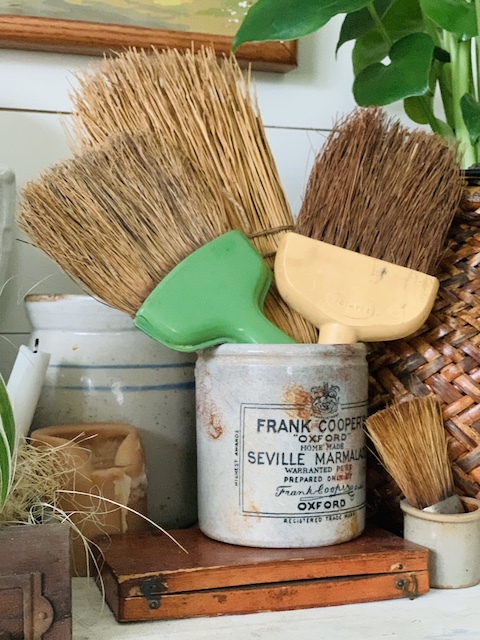
History Of The Whisk Broom
Simply put, a broom is a cleaning tool that is made of stiff bristles and has a handle. In fact, the word ‘broom’ is derived from Anglo-Saxon England during the Early Modern Period and means “thorny shrub.” The earliest documented brooms were simple twigs and brush tied together and attached to a stick. These crude brooms were used for tasks like sweeping up ash from around the fire. Such simple brooms date back to biblical times and while useful, these unrefined brooms would fall apart easily. It wasn’t until about 1797 that the ‘modern broom’ came to be. As the story goes, in late 1700s, a loving farmer made a broom for his wife out of sorghum (also known as ‘broom corn’ today) and gave it to her as a gift. His wife loved this gift because it swept better than other brooms during that time, but it would ultimately fall apart, as brooms of that time inevitably did. By the early 1800s, the farmer was making/producing brooms for the public but he continued to dream of creating a broom that would not fall apart.
The solution to this problem was invented a few years later. The foot-treadle broom machine changed the way that brooms were made for good. The machine helped to bind the sorghum together so that the broom would not fall apart. You can read more about how brooms were made here. As time went on, people were presented with a variety of “broom options”. There were flat brooms and circle brooms and short brooms and long brooms – all used for different tasks. For example, people could purchase smaller brooms for tight spaces such as around the fireplace or larger brooms with long handles were used to sweep the floors. These options made cleaning much easier for so many. The whisk broom, a short-handled broom that is smaller in size, certainly has been a popular option over the years.
By the early 20th century, there were broom factories sprinkled all over the United States, with the heart of the broom-making industry in Kansas, because that is where there was an abundance of corn. However, as did many things, the broom industry suffered during the great depression and not many companies survived. Today, Mexico exports brooms to the United States and there are only a handful of companies here in America still making brooms. Fun fact though: Broom Corn is still used to make quality brooms of all sizes!

A Few Broom Varieties
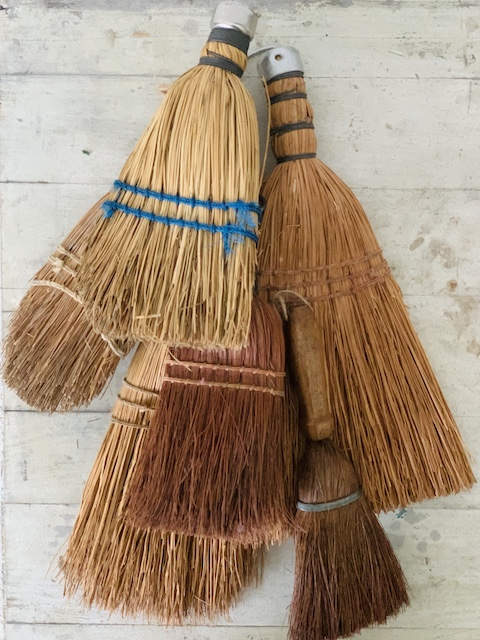
I have sold several old whisk brooms over the years in my antique booth, but I have decided to keep a few. While they do all share that gorgeous rich brown color, there are some differences. Let’s take a look!
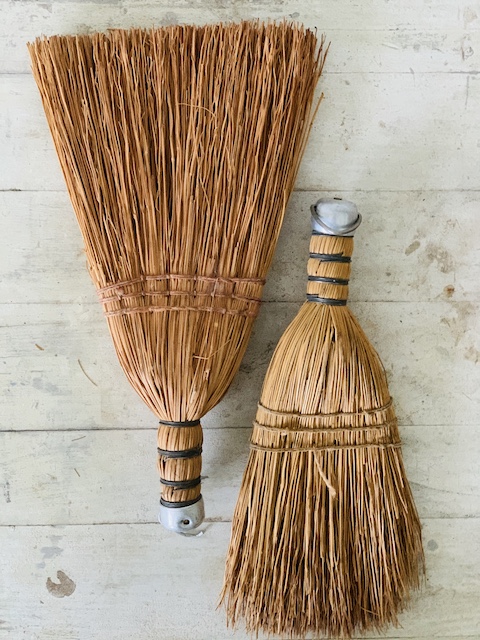
Most common are these whisk brooms that have a silver cap and that are about 12 inches in length. You can find modern versions of these today at most stores or online and can find vintage examples here. If you have one that is about this size then you can look for signs of age such as tarnished wiring and wear on the bristles to help you determine if it is brand new or if it is a bit older.
Above is another example that I really like. I like this one because it is longer in length than most. Measuring in at 18 inches it is quite nice to decorate with because it adds in some variety to the shorter ones that I have. Also, this broom does not have a metal cap – which is also different … and I like that as well.
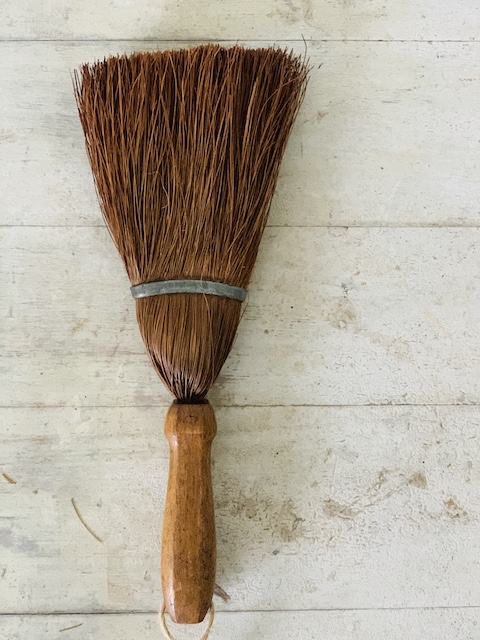
This whisk broom was a gift for my dad. He enjoys finding the things that I like, and I sure do like this one. It is more interesting than some because it has a unique wooden handle.
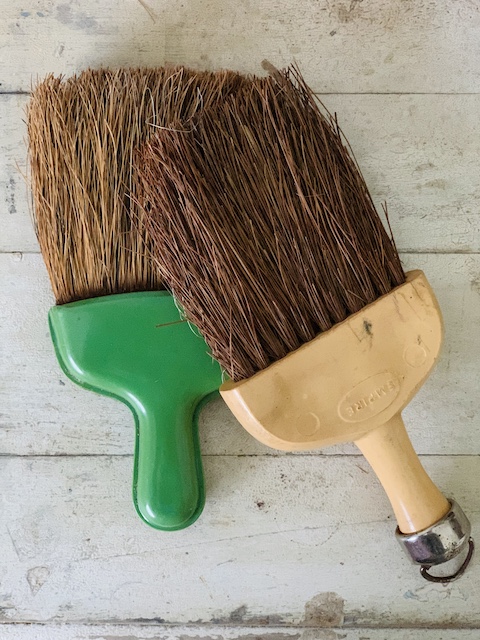
I love the colors of these little guys. All I need is a red one and I will be ready for the holidays! I don’t see these whisk brooms as often in my area, but I think they are quite charming. The plastic handle tells you that it isn’t as old as some – but they still offer a unique vintage look.
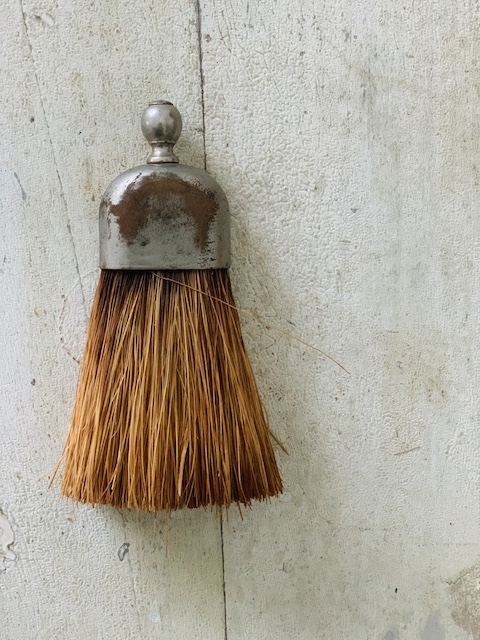
I love this tiny, cute, little whisk broom!! It is smaller in size, about 3 inches, and is the perfect combination of beauty and function. The stately silver handle adds a very ‘fancy’ touch when compared to my other whisk brooms. These were often used to help clean crumbs from the table.

Lastly, I want to share my very favorite whisk broom. This one is beautiful to me, with it’s rich colors and its refined stitching. I am even drawn to the tight wire wrapping around the handle. I haven’t seen many like this and I’ve used this one in many vignettes over the years … but never for sweeping (wink)!!
Decorating With Old Whisk Brooms
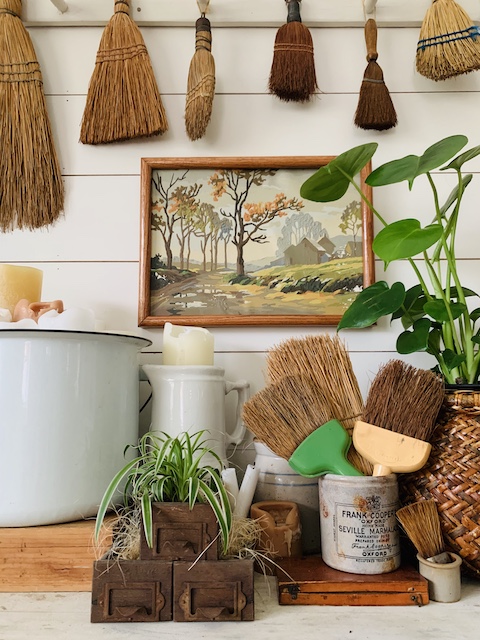
These old whisk brooms can be so much fun to decorate with around the house. Most recently, I hung a few from my peg rail. This helps me to display the variety of my collection while they are hanging.
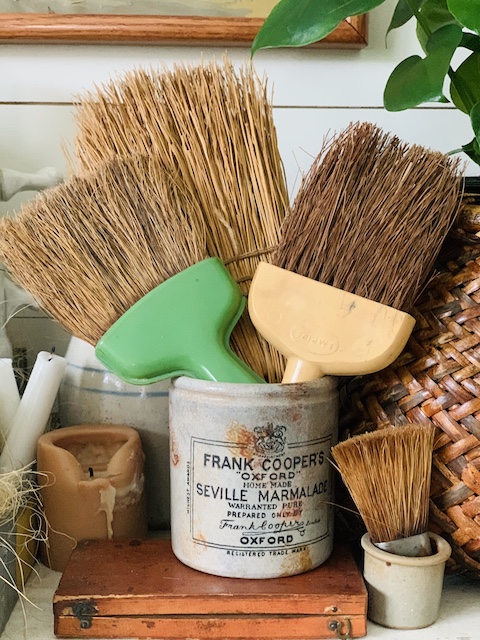
Either alone or as a group, I also love to pop them into short little containers such as crocks or jars. The texture that the broom bristles offer is unbeatable.
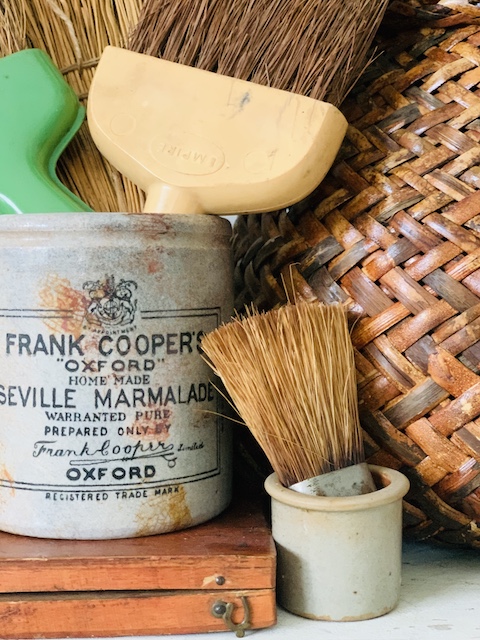
I also found a large variety of whisk brooms and created a “vintage broom board” over here on Pinterest. You can take a look at my vintage broom board to see a variety of ways that people have displayed old brooms in their homes. Man, people sure are creative!
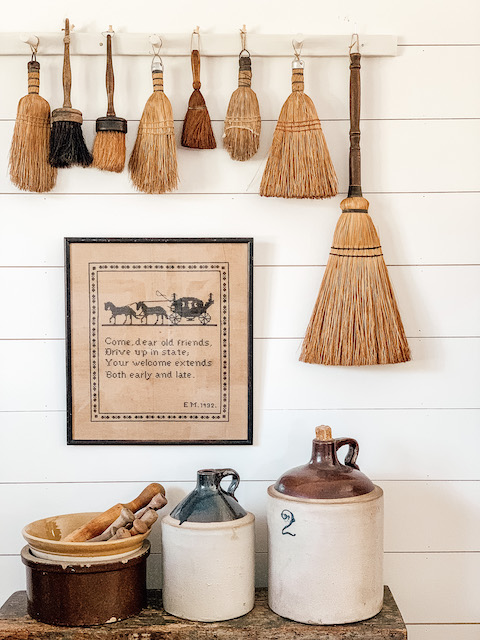
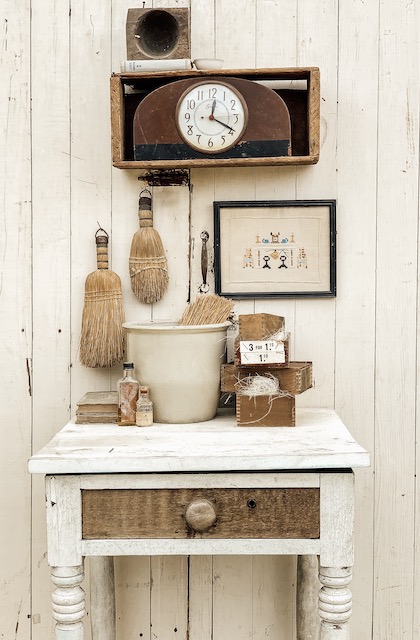
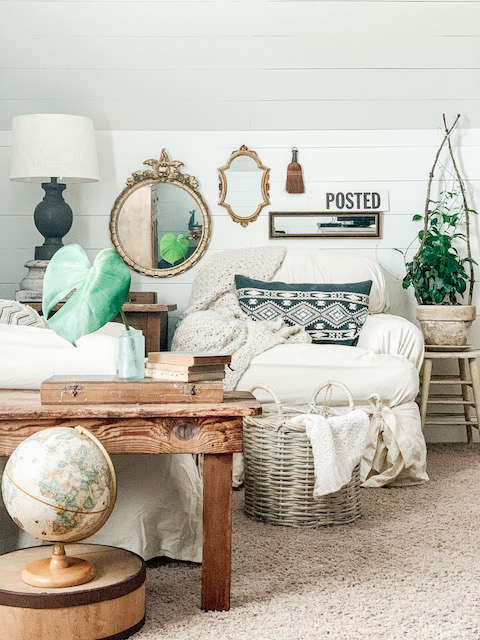
A Few Quick Random Broom Facts
- The first broom made with synthetic bristles was created in the 1940s.
- Make sure your broom bristles are always dry, otherwise you risk the chance of mold growing.
- We typically use flat brooms today, but it has been said that rounded brooms sweep better.
- Most of the vintage brooms can be found in antique stores around my area around $10-$30.
Wrap Up
As I have said many times before, I am so happy to have the chance to share my passion for these old things here with you on the blog. There is something a little extra special though when we can appreciate the beauty in such a simple utilitarian item. The evolution of the old whisk broom is quite exciting – and I have a feeling that the design and beauty of the broom won’t be changing anytime soon! How wonderful is that!

Shop Below
I found some of my favorite old whisk brooms from around the web. To shop, simply click on the picture!



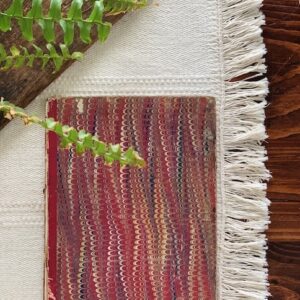 Paper Marbling
Paper Marbling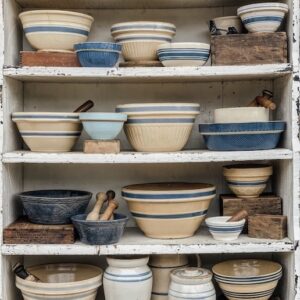 My Favorite Vintage Blue Bowls
My Favorite Vintage Blue Bowls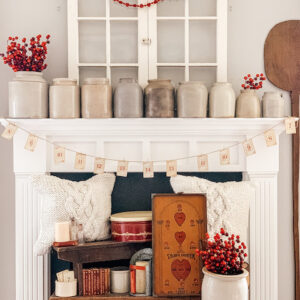 Vintage Valentine Decor You Should Be Buying Now
Vintage Valentine Decor You Should Be Buying Now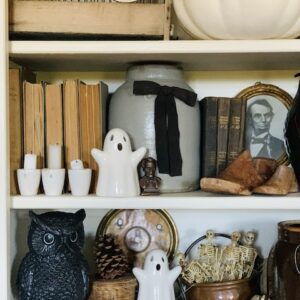 Haunted Halloween Shelves
Haunted Halloween Shelves

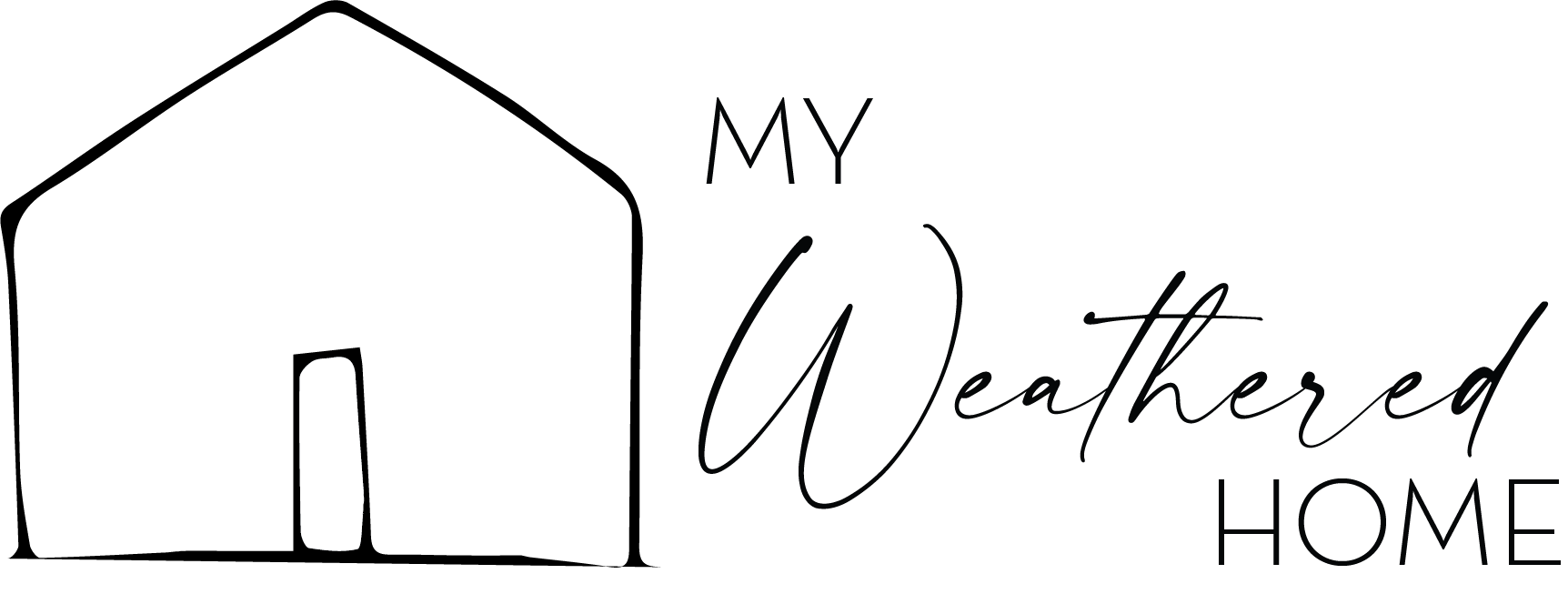
I love love love learning from you, being inspired by you and seeing what kind of fun things you find on your “hunts”. Thank you for sharing! I appreciate you!
Oh, my friend. I am so honored to read this. Thank you for spending your time with me. It means the world!
I enjoyed this so much. Thank you. Old whisk brooms are one of my favorite collections that I have. My Daddy always had a whisk broom in his truck and I think that’s one reason why I am so drawn to them. They remind me of my sweet Daddy!♥️
I always feel like we are called to collect things that remind us of our past. I am so happy that you enjoyed the post. Thank you for stopping by!